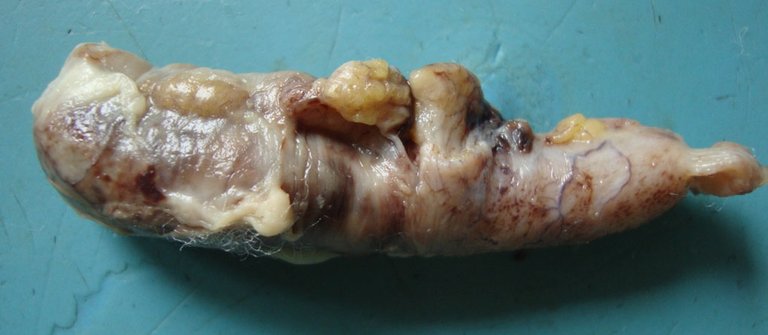Will it be wrong if I reiterate the words in The New England Journal of Medicine published in August 8, 1935, that says "that almost universally, appendicitis has come to be regarded as a surgical ailment" since in our world today, it is still the best option for a person suffering from appendicitis (inflamed appendix).
Looking at the date of the journal we can tell that appendicitis didn't just start yesterday, in fact, it didn't start the year that journal was published. To talk about appendectomy, we will have to go back to ancient Greece with Aretaeus of Cappadocia who wrote about a lot of diseases including one which he referred to as pointing which he explained as pus draining from an abscess on the abdomen. While he didn't see an appendix in humans, he believed that there was a cause for pus draining from an abscess in the abdomen.
Soon dissections on humans began and an Italian physician named Jacopo Berengario da Carpi was able to find it. He described it in his book Isagogae as the sac intestine, and it was in this book that the appendix was described for the first time. It was at this point that we knew its description as a hollow tube hanging off the cecum. Although scientists now knew what the appendix was, they didn't know its function.
It was in 1754 that Laurence Heister, a German surgeon described the inflammation of the appendix. He got to know about the inflammation when examining a dead body and although he wasn't sure if the inflammation was responsible for the death of the person, he assumed that the person would have suffered stomach pain.
The appendix is a hollow tube but then things could obstruct this tube leading to the buildup of bacteria causing the appendix to become inflamed in what we refer to as uncomplicated appendicitis. If the appendix rupture causing the bacteria to spread into the body, then it is referred to as a complicated appendicitis. Although scientist had known about the inflammation of the appendix, no one had operated on it until Claudius Amyand. Amyand operated on the appendix not because it was inflamed but because a boy had swallowed a pin and the pin found its way to the vermiform appendix. Amyand removed the appendix and was such the first to perform an appendectomy, although it is believed that Mr William Cookesley was the first to remove an appendix but he didn't document this, so it wasn't confirmed.
Fast forward to 1759 with Baron Guillaume Dupuytren (a name familiar among medical students for dupuytren's contracture) who found the typhlitis which is the inflammation of the cecum and appendix. Over time, Reginald fitz explained in his book 'perforating inflammation of the vermiform appendix' the inflammation of the appendix, and coined the word appendicitis.
Contrary to the past perception of the appendix as a vestigial organ, recent scientific perspectives suggest it houses microbial flora that can replenish the intestinal microbiome after disruptions like diarrhea. Although living without an appendix is feasible, medical professionals carefully weigh the benefits and drawbacks before recommending an appendectomy.
As we reflect on the historical journey of understanding appendicitis, the surgical approach remains a cornerstone in managing this condition, emphasizing the importance of adapting medical practices based on evolving knowledge.
Reference
https://www.nejm.org/doi/full/10.1056/NEJM193508082130601
https://www.ncbi.nlm.nih.gov/books/NBK493193/
https://cbc.org.br/wp-content/uploads/2014/02/02012014-AS.pdf
https://books.googleusercontent.com/books/content
https://www.google.com/books/edition/
https://www.ncbi.nlm.nih.gov/books/NBK580514/
https://www.ncbi.nlm.nih.gov/pmc/articles/PMC9971071/
https://www.ncbi.nlm.nih.gov/pmc/articles/PMC1391465/pdf/annsurg00649-0020.pdf
https://www.frontiersin.org/articles/10.3389/fnana.2019.00011/full#B19
https://iiif.wellcomecollection.org/pdf/b22454706
https://www.ncbi.nlm.nih.gov/pmc/articles/PMC9155691/pdf/southmedrec150998-0034.pdf
https://www.nejm.org/doi/full/10.1056/NEJM193508082130601


